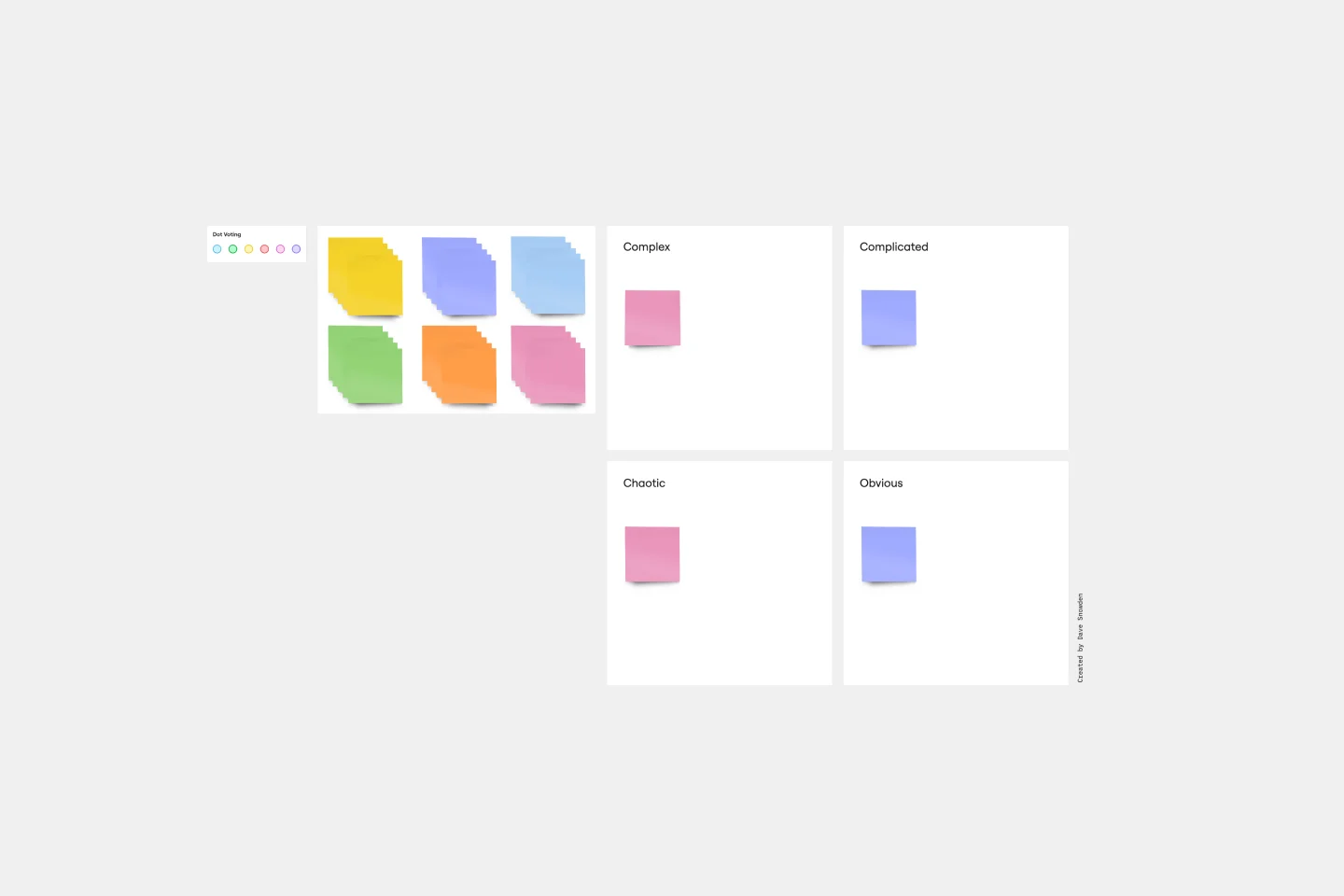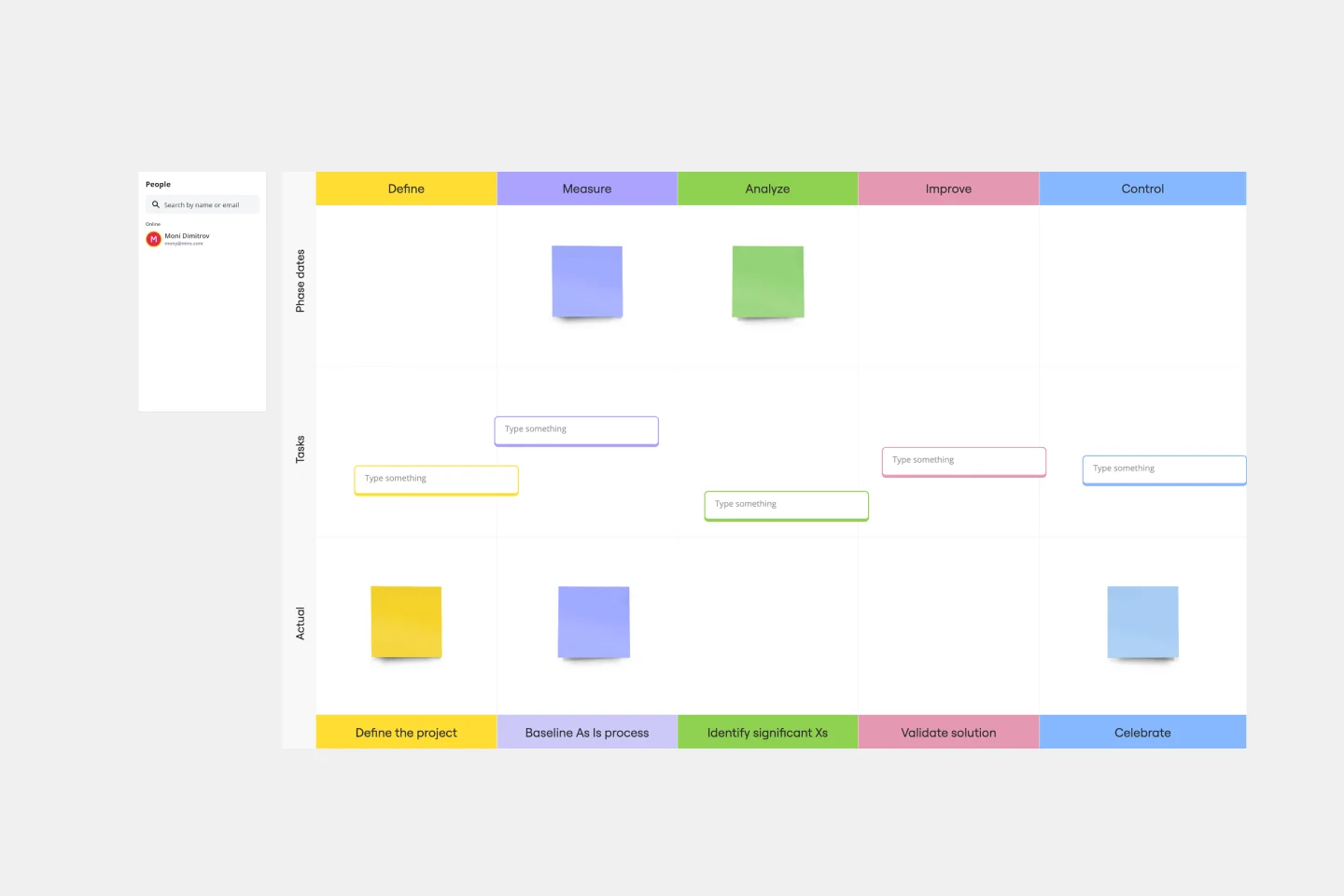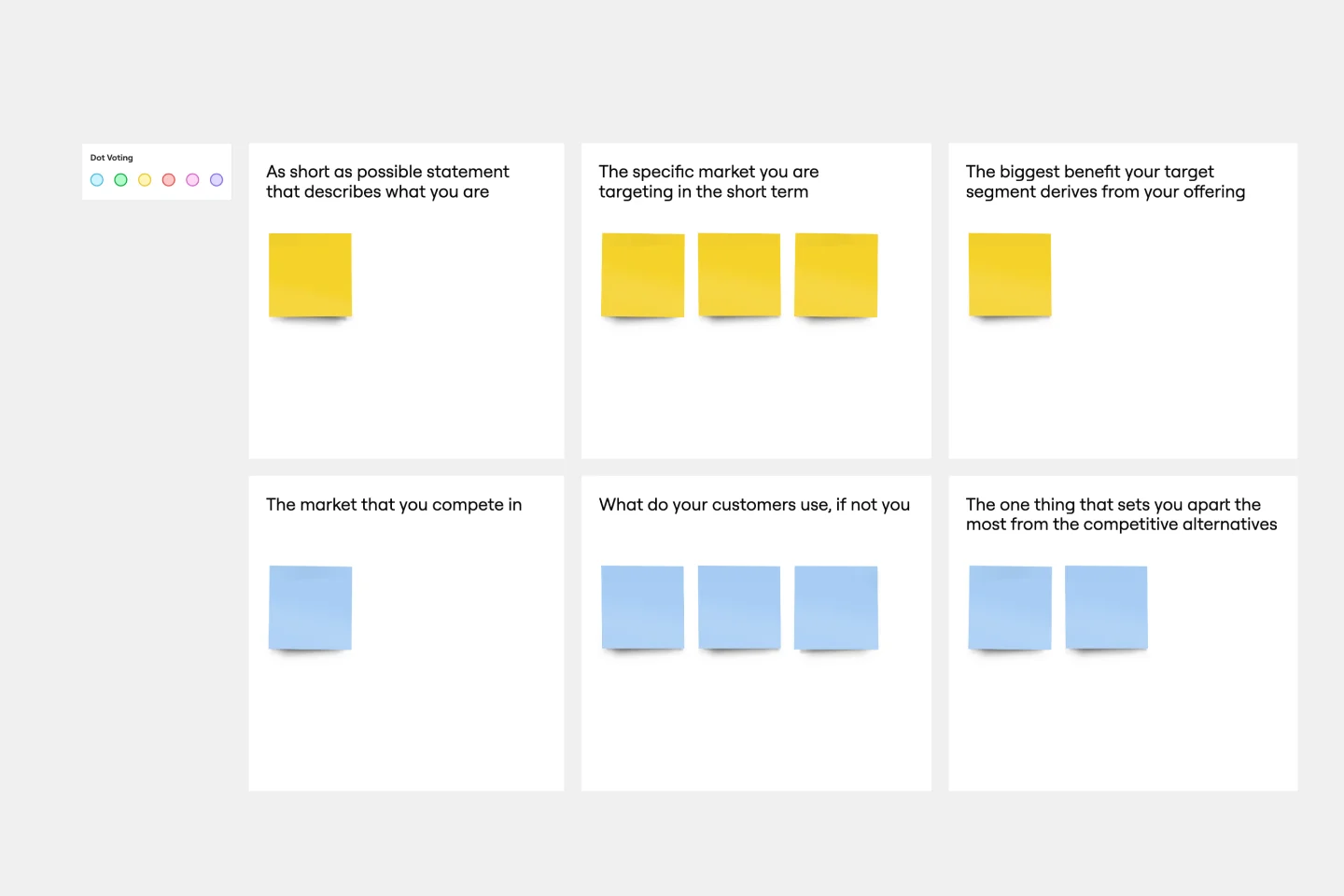About the AARRR template
Our AARRR template allows businesses to use the AARRR model. It’s typically used by start-ups, small businesses, and SaaS companies to understand the customer journey better, create key metrics, and set achievable goals.
This model splits the customer lifecycle journey into five stages, from initial contact to becoming a paid customer. Each stage is assigned a certain metric that helps teams track and measure the growth and success of the business.
Now, let’s look at the AARRR model in more detail.
What is the AARRR model?
AARRR is an acronym for the metrics that any start-up should focus on. It stands for Acquisition, Activation, Retention, Referral, and Revenue.
AARRR helps hone in on what you should understand about your customers, their journey, your funnel, and how you should set actionable goals for your start-up. AARRR is commonly accepted as the five most important metrics for a start-up to focus on.
The 5 factors of AARRR
The AARRR model is broken down into the following factors:
Acquisition — How can a potential customer find my business? The acquisition phase involves identifying all the channels that a consumer could use to find your business. These include:
SEO
Social media
Inbound marketing campaigns
Email marketing
Paid advertising
Activation — How can I provide a good experience for my potential customers to help them convert? Your acquisition efforts have paid off. Now, you need to think about how to convince consumers to take action — this is where the Activation stage comes into play. In this step, you’ll focus on how to convert potential leads into full-paying customers.
Retention — How can I keep my customer base coming back to my product or service? Your consumers are taking action, so it’s time to turn your efforts into retention. This involves keeping their interest in your business and encouraging them to come back to buy again.
Referral — How can I get a customer to recommend my product or service? As a start-up or small business, both recommendations and reviews are important. They solidify your brand as reliable and help you reach a wider audience.During this stage of the AARRR process, you’ll focus on how to get existing customers to recommend your business to other consumers.
Revenue — How can I make sure the business is seeing profitable growth? The final step makes sure that all your efforts in the previous four stages result in a revenue increase. This is the only way you’ll know if everything you’re doing is resulting in profitable growth. After all, this is the whole point.
Why use the AARRR model?
Using the AARRR model offers a lot of benefits for businesses, especially smaller businesses or start-ups that are just getting off the ground. Why? Because the five metrics in the model focus on growth while also being simple and actionable.
Let’s take a look at some other benefits in more detail.
Use resources wisely. Small businesses and start-ups have smaller budgets than larger organizations. They need to use their resources wisely to maximize their return. Business owners can use the AARRR template to make sure they’re investing time and money in the right areas.
Better understand customer behavior. The entire AARRR model is structured around the customer journey. It uses various customer touchpoints to create metrics that help you measure success. As a result, you’ll get a pretty good insight into how your customers behave and what the customer journey looks like.
Provide a better customer experience. By better understanding who your customers are and what they expect from you, you can offer them a better experience. For example, by understanding what your audience wants, you can personalize your marketing efforts to increase engagement and improve the overall buying experience.
How to use the AARRR template
Creating an AARRR model is easy with Miro. To get started, simply select this AARRR template and start filling in the information. You can also customize the template to suit your needs, so you can create an AARRR model that’s perfect for your team.
But what exactly do you need to include in your AARRR template? Take a look at these five steps to give you a good idea.
Step 1: To think about Acquisition, start with your total market. Who would benefit from your products? Once you have that pool of potential customers, think about the channels you’ll use to reach them. That subset represents your reachable market.
In terms of metrics, you’ll need a specific measurement for each of your channels.
You might have a measurement for SEO that tracks how many consumers visit your site through organic search. For paid ads, it might be someone clicking your ad and staying on your website for 10+ seconds. Whatever it is, you’ll be able to refer back to the template to see how your acquisition efforts are performing.
Step 2: In the Activation phase, think about the product or experience you want to deliver for your customer. You want to turn active users into qualified leads, so what needs to happen for a prospect to become a customer?
Here are some of the metrics you can use in your AARRR template to measure Activation:
Spending time on your website or app.
Visiting additional pages on your website.
Signing up for your newsletter.
Signing up for a free trial of your product or service.
Buying your product or service.
Step 3: During the Retention phase, think about how you can keep customers coming back. How do you encourage them to buy again and keep your customer churn rate down?
Your measurements for this phase will track how your retention efforts are performing. Here are a few examples:
Customers return to your website repeatedly.
Customers engage with your email marketing (either by opening the email or clicking one of the links).
Customers engage with your social media (either by following your account, liking or commenting on your posts, or sharing your posts with other users).
Step 4: When it comes to Referral, you want existing customers to spread the word about your business. One way to do this is to start building a marketing strategy that incorporates a referral program.
Take a look at these examples of referral incentives to give you some inspiration:
Offer a ‘refer a friend’ coupon in your email marketing or when a customer makes a purchase.
Host referral contests on social media.
When new customers make a purchase, ask how they heard about you. Have ‘recommendation from a friend or family member’ as an option to choose from.
When it comes to tracking referrals, there are various options you can use. Ultimately, the metrics depend on the marketing channels and activities you’re using.
Step 5: To generate Revenue, start calculating whether your business model is sustainable and how you should price your goods or services. You need to make sure your efforts are increasing your revenue. If they’re not, you need to go back to the drawing board and come up with some new ideas.
To make sure your revenue metrics are effective, use the SMART goals framework. With this framework, you’ll make sure that all your measurements are detailed, achievable, and realistic.
FAQs about the AARRR model
What does AARRR stand for?
AARRR stands for Acquisition, Activation, Retention, Referral, and Revenue. In some models, there’s also an additional ‘A’ in the acronym. Instead of starting with Acquisition, it starts with Awareness. This is known as the AAARRR funnel. Awareness focuses solely on how to reach a wider audience. It raises brand awareness and gets consumers through the first stage of the funnel. In most AARRR models, Awareness is part of the Acquisition stage.
What are ‘AARRR pirate metrics’?
Before we answer this question, we have a question for you. If you say the word ‘AARRR’ out loud, what do you sound like? That’s right — you sound like a pirate. The AARRR acronym sounds pretty similar to a pirate saying ‘Argh.’ As a result, it’s sometimes known as the pirate metrics framework or the pirate funnel. It’s still the same framework — it just makes it a bit more fun to say out loud.
What is the AARRR funnel?
The AARRR funnel is another way of structuring the AARRR model. The five key stages are displayed in a top-down funnel. The funnel is used to represent the stages, but the AARRR model is what businesses use to put their metrics into action.

Miro
Your virtual workspace for innovation
Miro is an innovation workspace designed for teams of every size, everywhere, to dream, design, and build the future together. Our mission? To empower these teams to create the next big thing, powered by AI at every step of the way. Over 90 million users around the world rely on Miro to untangle complex ideas, put customer needs first, and deliver products and services faster. All supported by best-in-class security, compliance, and scalability.
Categories
Similar templates
DMAIC Analysis Template

DMAIC Analysis Template
Processes might not seem like the funnest thing to dive into and examine, but wow can it pay off—a more efficient process can lead to serious cost savings and a better product. That’s what DMAIC analysis does. Developed as part of the Six Sigma initiative, DMAIC is a data-driven quality strategy for streamlining processes and resolving issues. The technique is broken into five fundamental steps that are followed in order: Define, Measure, Analyze, Improve, and Control.
Cynefin Framework Template

Cynefin Framework Template
Companies face a range of complex problems. At times, these problems leave the decision makers unsure where to even begin or what questions to ask. The Cynefin Framework, developed by Dave Snowden at IBM in 1999, can help you navigate those problems and find the appropriate response. Many organizations use this powerful, flexible framework to aid them during product development, marketing plans, and organizational strategy, or when faced with a crisis. This template is also ideal for training new hires on how to react to such an event.
Work Plan Template

Work Plan Template
A work plan is essentially a roadmap for a project. It articulates the steps you must take to achieve the desired goal, sets demonstrable objectives, and establishes measurable deliverables. An effective work plan guides you throughout the project lifecycle, allowing you to realize an outcome by collaborating with your team. Although work plans vary, they generally contain four core components: goals, strategy, tactics, and deliverables.
Product Positioning Template

Product Positioning Template
For better or for worse, your company’s chances for success hinge partially on your market. As such, before you start building products and planning strategies, it’s a good idea to conduct a product positioning exercise. A product positioning exercise is designed to situate your company and your offering within a market. The product positioning template guides you to consider key topics such as defining your product and market category, identifying your target segment and competitors, and understanding your key benefits and differentiation.
DMAIC Analysis Template

DMAIC Analysis Template
Processes might not seem like the funnest thing to dive into and examine, but wow can it pay off—a more efficient process can lead to serious cost savings and a better product. That’s what DMAIC analysis does. Developed as part of the Six Sigma initiative, DMAIC is a data-driven quality strategy for streamlining processes and resolving issues. The technique is broken into five fundamental steps that are followed in order: Define, Measure, Analyze, Improve, and Control.
Cynefin Framework Template

Cynefin Framework Template
Companies face a range of complex problems. At times, these problems leave the decision makers unsure where to even begin or what questions to ask. The Cynefin Framework, developed by Dave Snowden at IBM in 1999, can help you navigate those problems and find the appropriate response. Many organizations use this powerful, flexible framework to aid them during product development, marketing plans, and organizational strategy, or when faced with a crisis. This template is also ideal for training new hires on how to react to such an event.
Work Plan Template

Work Plan Template
A work plan is essentially a roadmap for a project. It articulates the steps you must take to achieve the desired goal, sets demonstrable objectives, and establishes measurable deliverables. An effective work plan guides you throughout the project lifecycle, allowing you to realize an outcome by collaborating with your team. Although work plans vary, they generally contain four core components: goals, strategy, tactics, and deliverables.
Product Positioning Template

Product Positioning Template
For better or for worse, your company’s chances for success hinge partially on your market. As such, before you start building products and planning strategies, it’s a good idea to conduct a product positioning exercise. A product positioning exercise is designed to situate your company and your offering within a market. The product positioning template guides you to consider key topics such as defining your product and market category, identifying your target segment and competitors, and understanding your key benefits and differentiation.